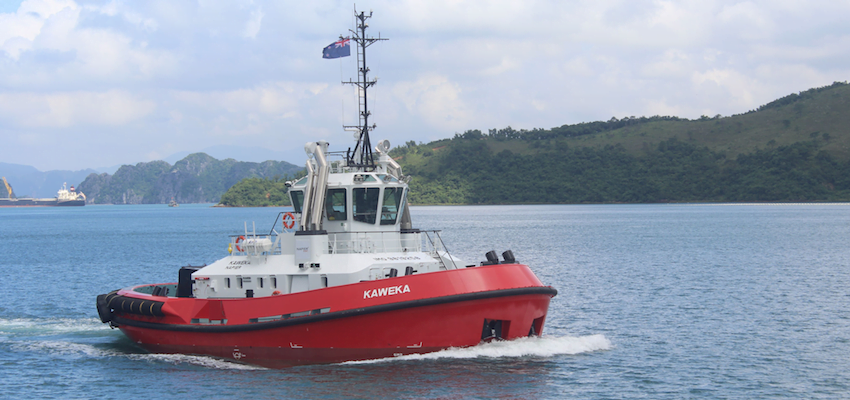TAKING inspiration from the mountain range surrounding Hawke’s Bay, the Kaweka was named after a positive engagement process with local marae, hapū and iwi. Napier Port’s third tug will soon set sail from Dutch company Damen Shipyards in Song Cam, Vietnam to arrive in New Zealand in early to mid-November.
The new Azimuth Tractor Drive (ATD) Tug 2412 Twin Fin, will join the two existing Voith-type tugs at the port – Te Mata and Ahuriri. Just 24 metres in length but with 72 tonnes of bollard pull, the Kaweka will deliver the right combination of power and compactness that the Napier Port Marine team is seeking.
Tractor tugs work well at Napier Port due to their ability to operate effectively in a swell, to tow indirectly, and their manoeuvrability, particularly important due to the tight berthing arrangements at the port.
Following its successful listing on the New Zealand Stock Exchange last month, Napier Port is now getting ready to build its sixth wharf. At 350 metres long, the wharf will be capable of handling the larger vessels that are expected to call at the port in the future and will also allow more ships to call.
Napier Port CEO Todd Dawson said, “Having a fleet of three tugs will be a major boost to our customer service.
“This is an important step toward building the resilience and agility of our infrastructure.
“A strong port is important to our region’s economic prosperity as a gateway to and from global markets. Over the last two years cargo volumes have increased and we need to grow our capacity to support future growth.”
Napier Port capability and cruise manager Bruce Lochhead and a team from Napier Port recently returned from Vietnam to carry out final checks, sea trials and commissioning of all equipment.
“The Kaweka performed very well and she looks great. Our marine team are excited to take delivery of the third tug in a couple of months,” Mr Lochhead said.
“This boost to our fleet will improve our ability to service vessels, including larger vessels, reduce congestion and delays, improve berth availability and maintain full marine services if one of our other two tugs was out of service.”

